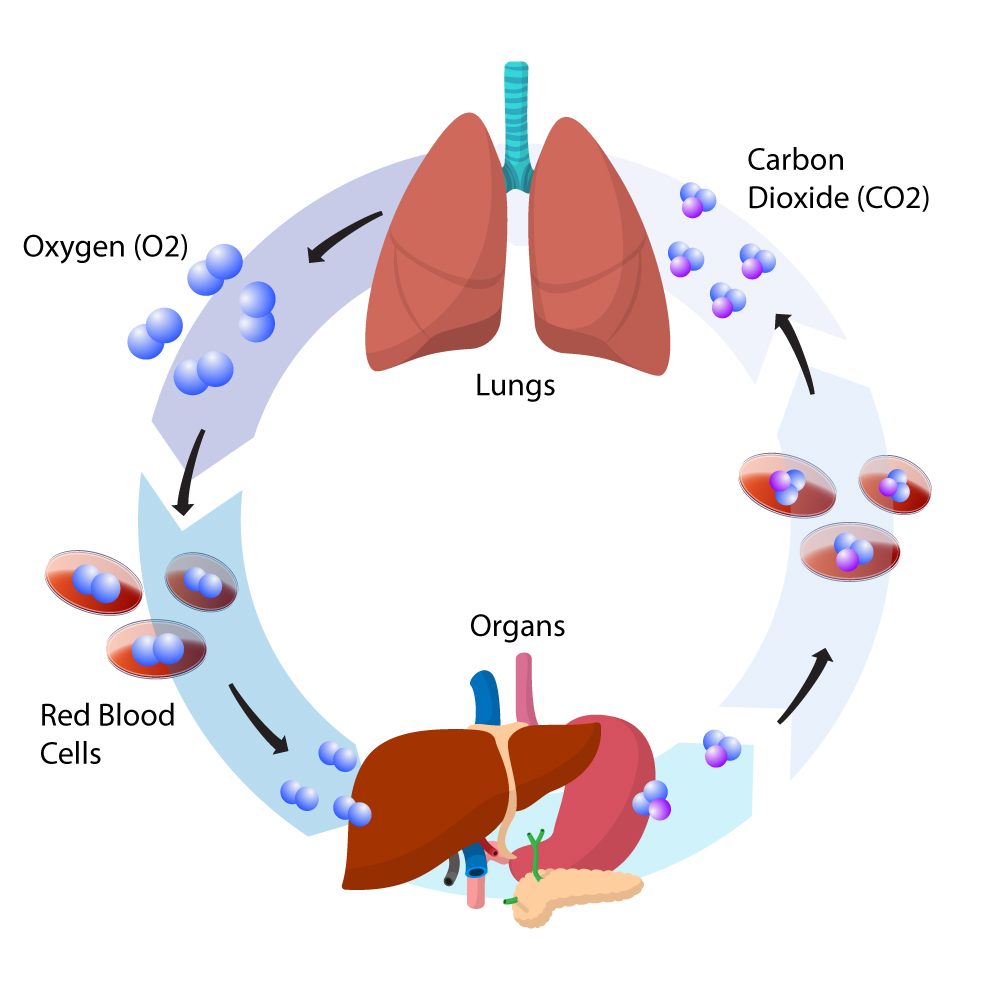Breathing is something we often take for granted. In fact, we may take upwards of 30,000 breaths every single day. But breathing is far more than just supplying our bodies with oxygen, and understanding the relationship between breathing and carbon dioxide is vital when it comes to our overall health.
While breathing does supply oxygen to our body, it has another significant role in our health. Breathing plays a crucial role with the intake of oxygen in addition to the release of carbon dioxide (CO2) from our bodies.
The Basics of Breathing
Before we delve into the relationship with carbon dioxide, let us start with the basics of breathing. Breathing is a complex process that involves inhaling and exhaling air. When we breathe in, our bodies take in oxygen (O2) from the air. Oxygen is essential for cellular respiration, the process that generates energy for our cells. When we breathe out, we expel carbon dioxide, a waste product of this energy-producing process.
The Role of Oxygen
Oxygen is crucial for our bodies to function properly. It is transported through the bloodstream by red blood cells and binds with hemoglobin, a protein that carries oxygen to all the cells in our bodies. Without oxygen, our cells cannot generate the energy needed for various physiological functions.
The Carbon Dioxide Conundrum
Carbon dioxide, on the other hand, is a natural byproduct of energy production in our cells. When our cells break down nutrients for energy, CO2 is produced as a waste product. Excessive carbon dioxide in our bloodstream can be harmful, which can cause acid-base imbalances and respiratory distress. One example of respiratory distress is hypercapnia. Hypercapnia refers to an excessive level of carbon dioxide in the bloodstream and over time, this can lead to serious cardiovascular and neurological complications.
Carbon Dioxide Accumulates in the Body During Sleep Apnea
Sleep apnea is a breathing disorder in which a person stops breathing multiple times per hour throughout the night while sleeping. When these long pauses in breathing occur, excess carbon dioxide accumulates in the blood, sometimes causing the sleeping person to gasp for air. Repeated interruptions in breathing due to sleep apnea can contribute to hypercapnia. Hypercapnia can cause headaches, confusion, shortness of breath, and increase heart rate. It is estimated that up to 80% of people with sleep apnea are undiagnosed. The only way to know if you have sleep apnea is through polysomnography (a sleep test). Visit Sierra Sleep Airway and Wellness Center to schedule your FDA cleared at home sleep test for a quick and easy screening done in the comfort of your own home.
The Balance of Breathing
Maintaining the delicate balance between oxygen and carbon dioxide in our bodies is essential. Our bodies are finely tuned to regulate this balance through nasal breathing and a feedback mechanism called the respiratory control system. The brainstem, particularly the medulla oblongata, plays a crucial role in monitoring the levels of CO2 in the bloodstream. When CO2 levels rise, it signals our body to increase the rate and depth of breathing, expelling excess carbon dioxide and bringing in more oxygen.
Hyperventilation and Hypoventilation
Understanding the relationship between breathing and carbon dioxide also helps explain the consequences of hyperventilation and hypoventilation.
- Hyperventilation: This occurs when we breathe too quickly or deeply, expelling more carbon dioxide than our body is producing. As a result, it can lead to a decrease in CO2 levels in the blood, causing symptoms like dizziness, tingling, and muscle cramps.
- Hypoventilation: In contrast, hypoventilation is when we breathe too slowly or shallowly. This leads to the retention of excess CO2 in the bloodstream, resulting in symptoms such as confusion, shortness of breath, and potentially more severe respiratory problems.
- Along with hypercapnia, hyperventilation and hypoventilation are commonly associated with sleep apnea.
Breathing Techniques and Mind-Body Connection
Breathing techniques have been used for centuries to improve physical and mental well-being. Techniques like deep breathing, meditation, and yoga emphasize controlled and mindful breathing. These practices can help regulate CO2 levels, reduce stress, and promote relaxation. They showcase the powerful connection between the mind and body, demonstrating how conscious control of breathing can influence our overall health. Breathing techniques should focus on breathing in through the nose for optimal health.
Conclusion
Breathing is not just an automatic, subconscious process; it’s a dynamic and vital aspect of our physiology that helps us maintain the delicate balance of oxygen and carbon dioxide in our bodies. Understanding the relationship between breathing and carbon dioxide allows us to appreciate the significance of proper breathing techniques, day and night. By maintaining this balance, we can optimize our overall health and well-being, ensuring that the breath of life continues to sustain us.
Carbon dioxide controls breathing (consciousbreathing.com)
The Effects of Carbon Dioxide in the Bloodstream (seattlepi.com)
How the Lungs Work – What Breathing Does for the Body | NHLBI, NIH
What Is Hypercapnia | Sleep Foundation

